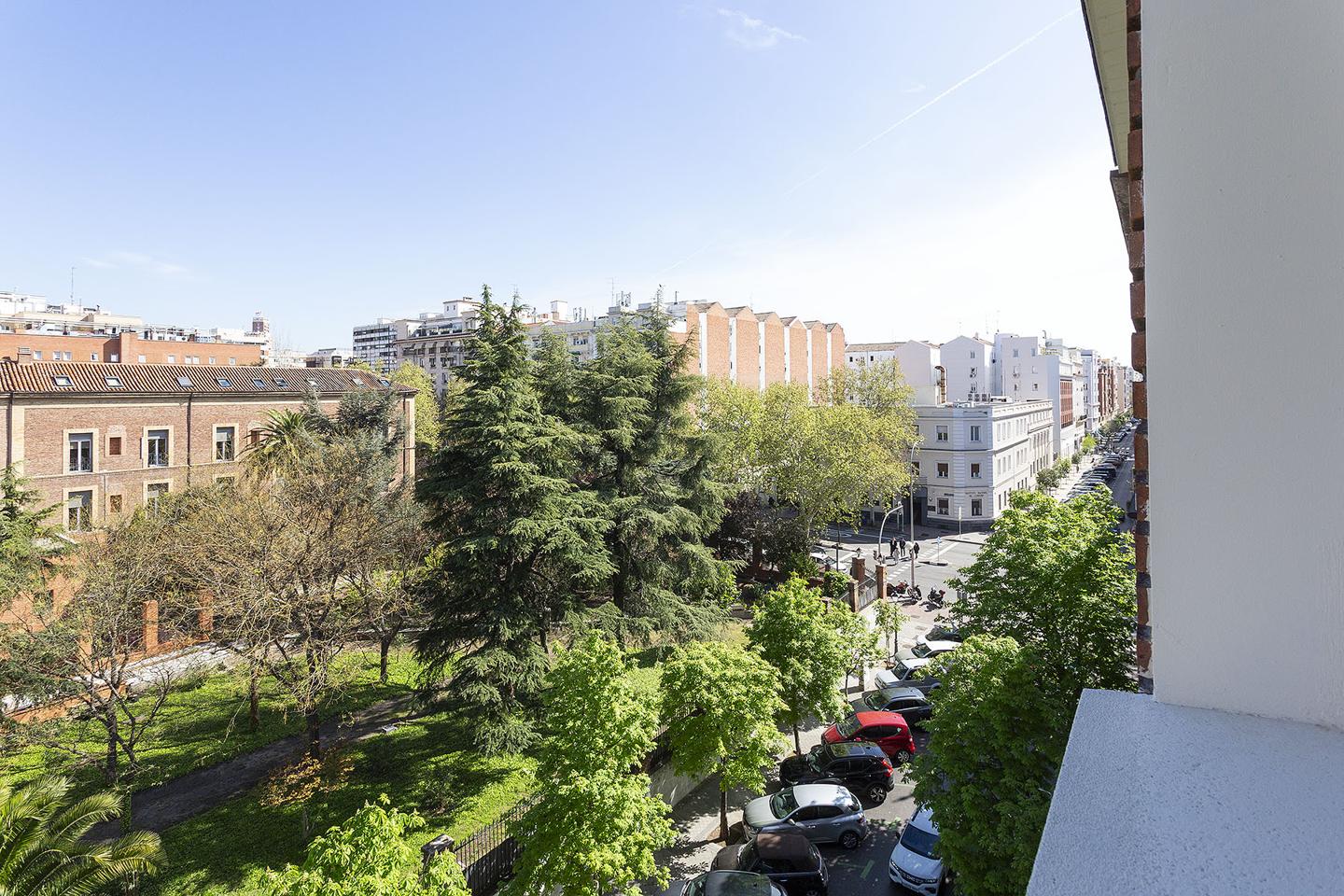Discover Salamanca: the plushest postcode in Madrid
Barrio de Salamanca is one of Madrid’s grandest and most architecturally significant neighbourhoods to live in its elegant mansions, museums, embassies, luxury shopping and world-class dining, this late 19th-century quarter is top of the list for prime and super-prime buyers seeking a pied-à-terre in the capital.
For all its lofty gentility, there are plenty of simpler pleasures to be found here too, from authentic tapas bars and one of the city’s most celebrated tortillas de patatas to perusing the shelves of its oldest operating bookshop.

Barrio de Salamanca began to take shape in 1860, part of a grand expansion plan for the city of Madrid under Queen Isabella II. A feat of large-scale urbanism, the plan envisaged a new residential district, reserved for the capital’s aristocracy and upper middle class. This gracious and prestigious neighbourhood was named for its principal architect: one José de Salamanca y Mayol, Marquis of Salamanca.
Broad avenues, an orderly modern grid system and sumptuous buildings are just a few of its distinguishing features. Salamanca is home to embassies and imposing townhouses (some still sporting their original carriage arches), but also Michelin-starred restaurants, museums and luxury stores. Its famous Milla de Oro around Calle Ortega y Gasset is one of the world’s most exclusive destinations for haute couture, fine jewellery, design and luxury goods.

A wealth of cultural treasures
Perhaps the most notable of Salamanca’s considerable cultural attractions is the National Archaeological Museum, where you can find an extensive collection of Iberian, Egyptian, Greek and Roman artefacts — including pottery from ancient Greece, the Visigothic hoard known as the Treasure of Guarrazar and an array of iconic sculptures, such as the Lady of Elche and the Lady of Baza. The Lázaro Galdiano Museum is another must. Housed in a former private mansion, it is the custodian of the renowned art critic’s own collection. Highlights include Bosch’s St. John the Baptist in the Wilderness and Goya’s Witches' Sabbath.
Also well worth a visit are the Juan March Foundation, home to a shifting cornucopia of temporary exhibitions and concerts, and the Carlos de Amberes Foundation, which counts Rubens’ The Martyrdom of Saint Andrew among its many treasures. Happily, Barrio de Salamanca is not too grand to make room for some contemporary popular music and sport. The WiZink Center (formerly known as the Palacio de Deportes), hosts frequent basketball matches and performances by Spanish and international artists.
Bulls, books and tortilla
The magnificent National Library, Palacio de Linares (now the headquarters of Casa de América), the Museum of the Royal Mint (one of the most important of its kind in the world), Las Ventas Bull Ring (the largest in Spain), the Neo-Byzantine Church of Saint Manuel and Saint Benedict and Mercado de la Paz, a vibrant indoor food market where you can sample one of the city’s best-loved tortilla de patatas, are just a few of the district’s other cultural landmarks.
While you’re here, make time for a browse in Madrid’s oldest book shop, Pérgamo, saved from closure in 2021 by a businessman who had been a loyal customer since childhood.